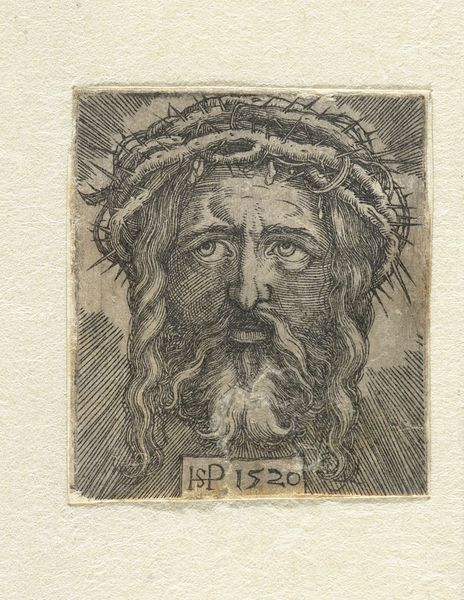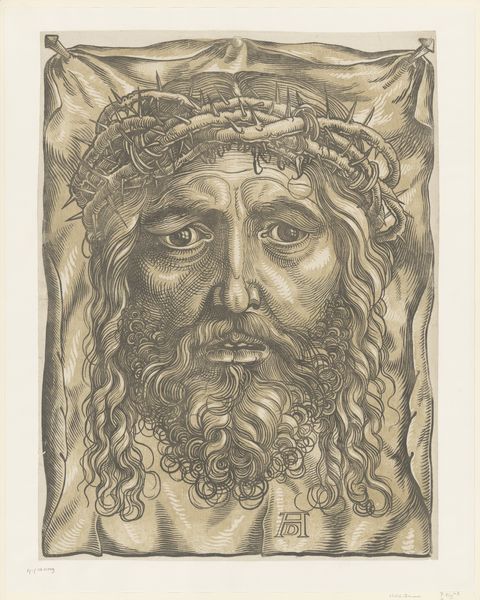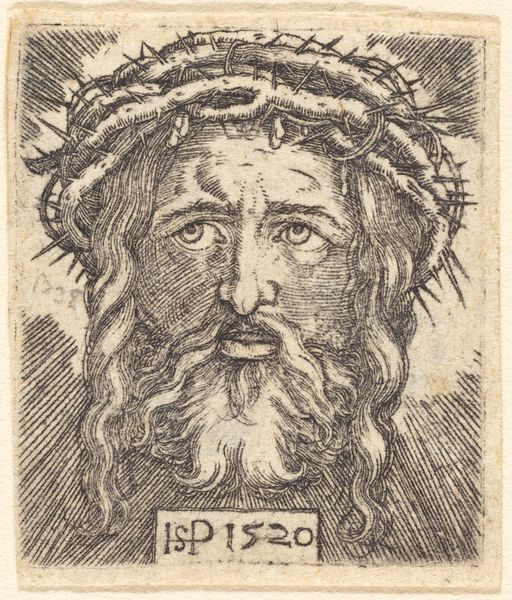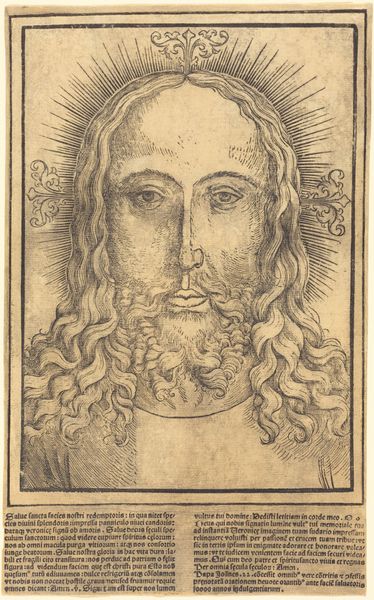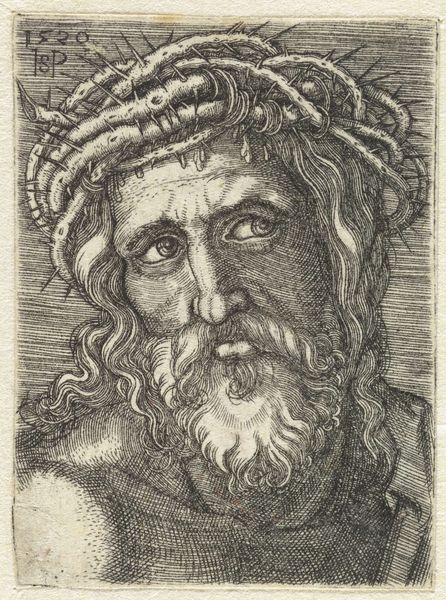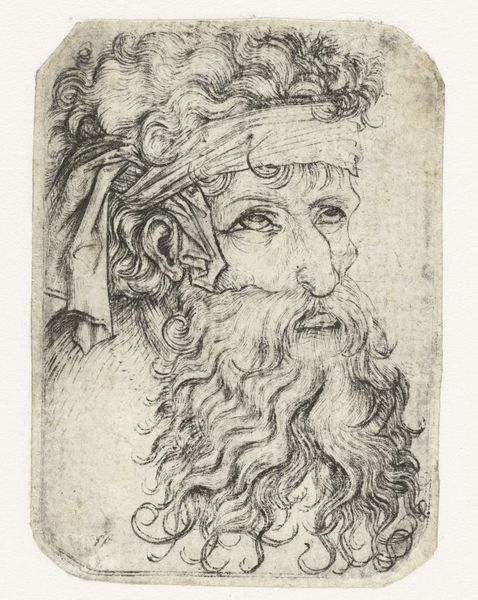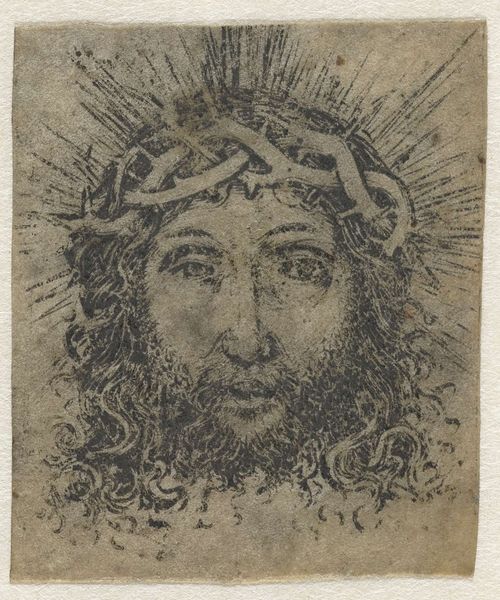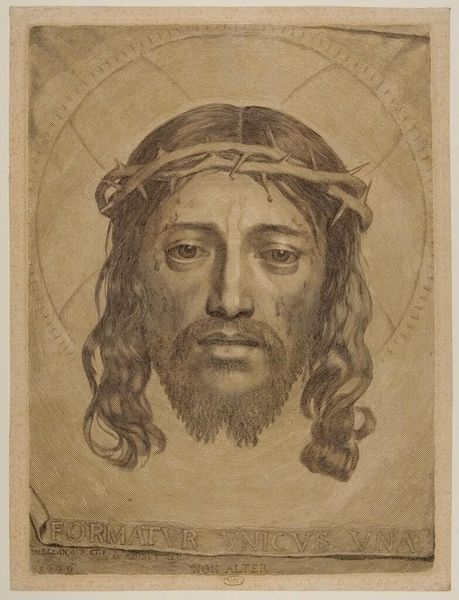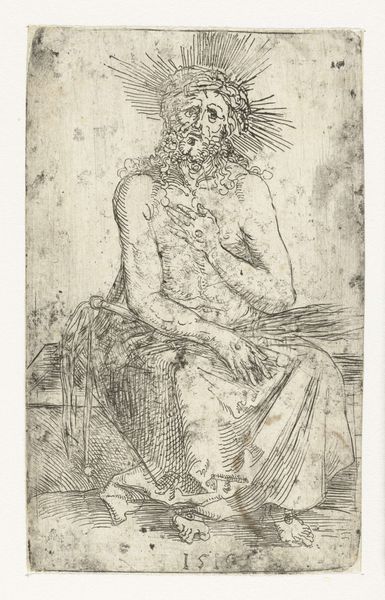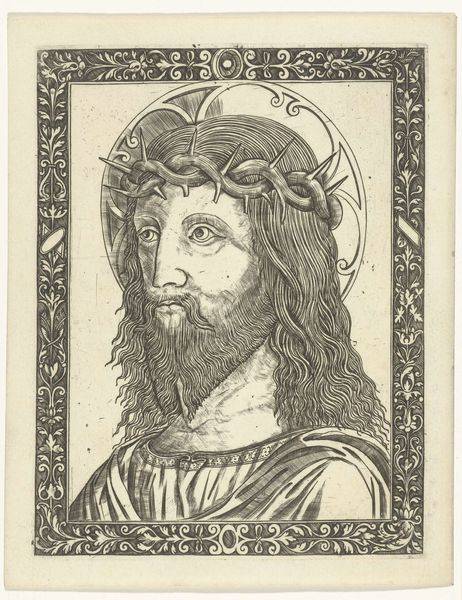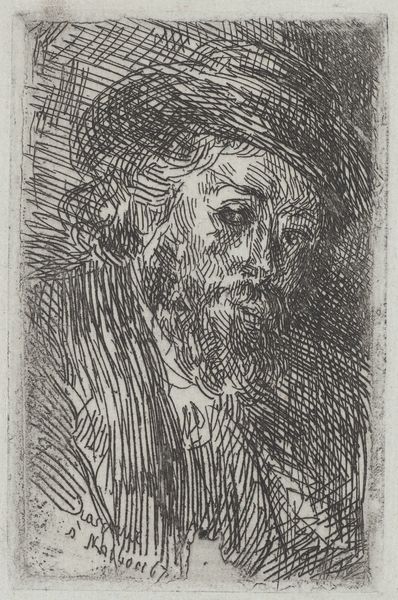
print, engraving
#
portrait
# print
#
old engraving style
#
figuration
#
11_renaissance
#
personal sketchbook
#
line
#
history-painting
#
northern-renaissance
#
engraving
#
realism
Dimensions: height 36 mm, width 27 mm
Copyright: Rijks Museum: Open Domain
Curator: Here we have Sebald Beham’s "Head of the Suffering Christ with the Crown of Thorns," an engraving dating back to 1519, currently held at the Rijksmuseum. Editor: The immediate impression is one of profound suffering, intensified by the stark contrast achieved with the lines and the way the head tilts—almost as if the subject can no longer bear the weight of the crown. Curator: Consider the role of printmaking at the time. Beham, and other artists, were essentially participating in a visual culture driven by the printing press. Religious imagery became more accessible. Editor: Indeed. From a formal perspective, observe the exquisite control in the lines. They aren’t just outlines, they model the form, creating depth and volume. Look at the meticulous rendering of the beard and hair. The whole image exudes drama, heightened by the manipulation of light and dark areas. Curator: Absolutely, and consider the physical act of engraving. It’s painstaking labor using metal tools, cutting lines into a copper plate. The marks themselves, the lines, the hatching – these are evidence of human action. Beham, a 'Little Master' grappling with complex theological issues in a period defined by Reformation. Editor: You are right. Moreover, the crown of thorns itself becomes more than a religious symbol—the way each thorn is individually rendered contributes to its overwhelming presence, both literally and figuratively pressing down. There's almost a palpable weight to the work, evoked through precise linework. Curator: I find it fascinating how such prints allowed for widespread dissemination of images and ideas, impacting social attitudes and perhaps challenging religious authorities by offering interpretations through readily reproduced art. Editor: So, as we reflect, it's not merely the religious aspect or Beham's technique alone that captivates but also the complex intersection of form, meaning, and reproducible material in shaping a visual experience centuries later. Curator: Precisely. It invites us to contemplate how artistic vision translated into social reality and personal faith through the act of making.
Comments
No comments
Be the first to comment and join the conversation on the ultimate creative platform.
